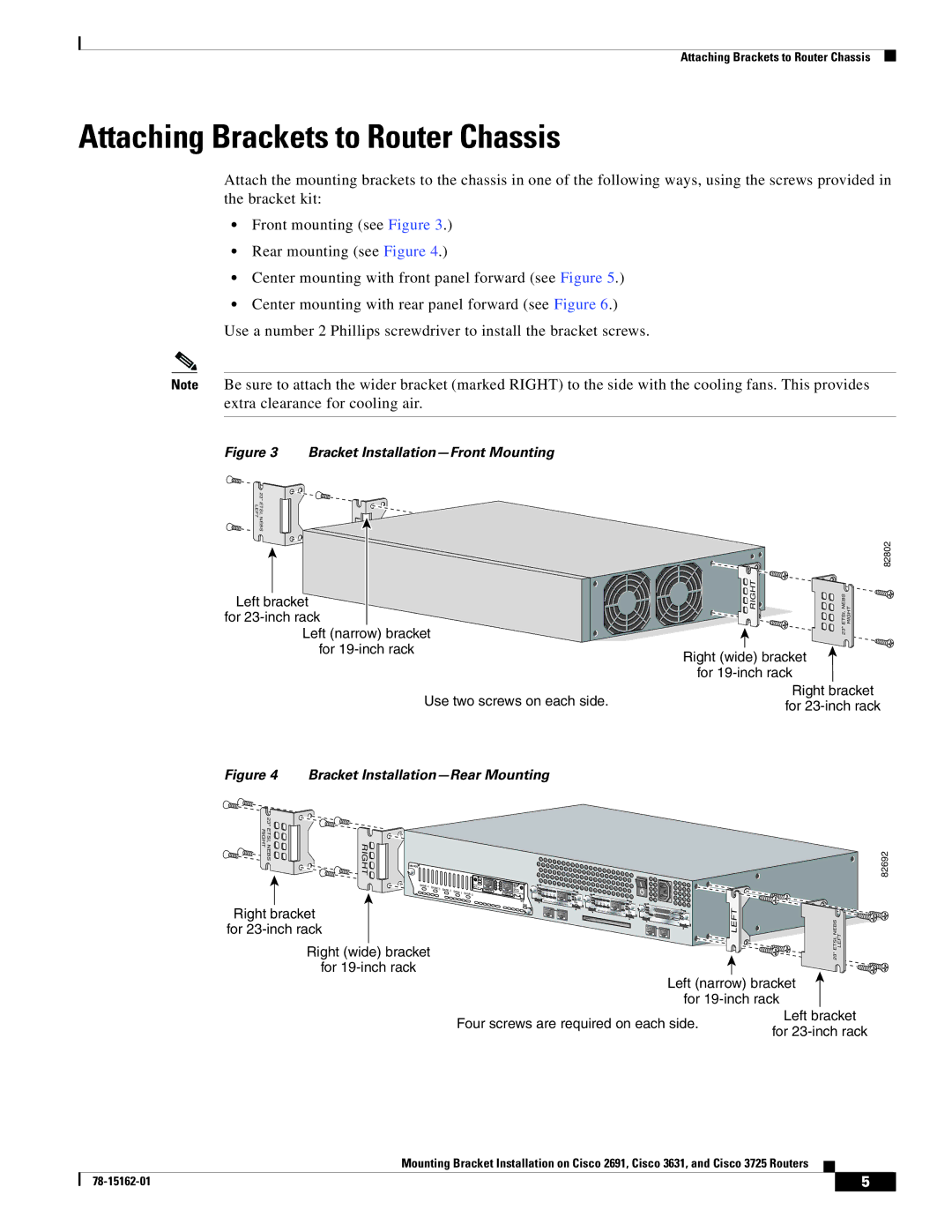CISCO3725, CISCO2691 specifications
Cisco Systems has long been a leader in the networking industry, providing a range of routers and switches to meet the needs of various enterprises. Two notable models from their extensive portfolio are the Cisco 3725 and Cisco 2691 routers. Both devices, designed for different market segments, showcase the innovation and reliability synonymous with the Cisco brand.The Cisco 3725 is a modular router designed for small to medium-sized enterprises. It offers scalability, flexibility, and comprehensive WAN connectivity. A key feature of the 3725 is its modular architecture, which allows for slot-based expansion. Users can customize the router with various interface cards to accommodate multiple WAN technologies, including T1/E1, ISDN, and DSL. This adaptability makes the Cisco 3725 an excellent choice for businesses expecting growth or those needing to support a diverse set of WAN connections.
Another significant advantage of the Cisco 3725 is its robust feature set, which includes advanced security capabilities such as access control lists, firewalls, and VPN support. Additionally, the router supports Quality of Service (QoS) parameters, ensuring optimal performance for bandwidth-sensitive applications like VoIP and video conferencing. The integrated Cisco IOS software facilitates a user-friendly experience while providing a vast array of routing protocols, including OSPF and EIGRP.
On the other hand, the Cisco 2691 is a compact, cost-effective solution well-suited for small offices or remote sites. It is designed with a focus on ease of use and straightforward implementation. The Cisco 2691 also features modular architecture, allowing for flexibility in connecting various WAN interfaces. It supports multiple technologies such as T1/E1 and integrated DSL options, making it adaptable for various connectivity requirements.
In terms of performance, the Cisco 2691 supports advanced routing capabilities, ensuring reliable data transfer and efficient network management. It is equipped with essential security features, including firewall and VPN support, catering to the needs of businesses that prioritize data protection.
In summary, both the Cisco 3725 and Cisco 2691 serve critical roles in the networking landscape, with the former targeting small to medium-sized enterprises requiring advanced modularity and security, and the latter catering to small businesses or remote sites looking for a simple, cost-effective solution. As part of Cisco's extensive offerings, these routers exemplify the company's commitment to providing innovative, reliable, and secure networking solutions.

